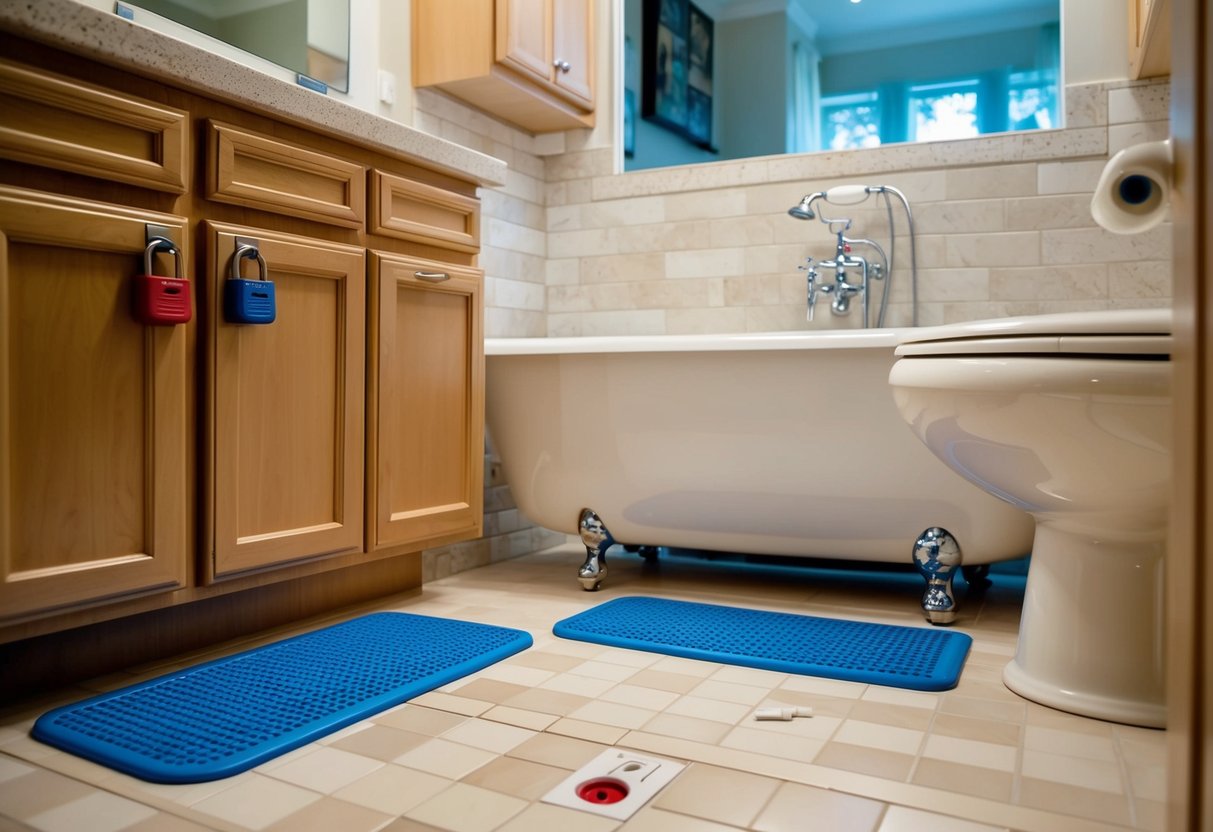The Complete DIY Guide to Childproofing Your Home Environment
Bathroom Safety

Childproofing the bathroom involves addressing water hazards and securely storing medications. These actions create a safer environment for children in one of the home’s most potentially dangerous rooms.
Water Safety Measures
Bathrooms pose significant water-related risks to children. They need constant supervision near water to prevent accidents like drowning. Installing anti-slip mats in the bathtub reduces the chance of falls. Bathwater temperature regulators ensure baths are warm but safe, preventing scalds. Additionally, child-resistant toilet locks can be installed to prevent curious toddlers from accessing unsupervised water.
To further enhance safety, always drain bathwater immediately after use and keep the bathroom door closed when not in use. These simple steps can minimize the risk of water-related accidents.
Locking Away Medications
Access to medications poses another significant risk. Medicines should always be stored securely, well out of reach of little hands. Utilize cabinets with childproof locks or latches to store medications. A high shelf is another good option, as it keeps the items far from a child’s line of sight.
It is also important to keep medications in their original containers, which often have childproof lids. Proper labeling prevents accidental misuse. Educating older children about the dangers of these substances, combined with safe storage, can significantly reduce the risk of accidental ingestion.
Nursery and Bedroom Safety
Creating a safe nursery and bedroom involves ensuring the sleeping environment is secure and stable. Proper measures can prevent potential accidents and injuries.
Safe Sleeping Practices
When setting up a nursery, ensuring the baby sleeps safely is crucial. Use a firm mattress that fits snugly in the crib to prevent gaps where a baby could get trapped. Remove pillows, blankets, and toys from the crib to minimize suffocation risks.
Position the crib away from windows, radiators, and cords. Opt for fitted sheets specifically designed for cribs. To reduce the risk of SIDS, always place the baby on their back for sleep. Keep monitoring devices on hand to ensure real-time alerts of any unusual activity.
Implement regular cleaning routines to maintain a hygienic environment. Inspect the crib periodically for any loose or broken parts. Consistent upkeep is vital for maintaining safety standards.
Preventing Furniture Tip-Overs
Furniture tip-overs pose a significant risk in a child’s bedroom. Anchor heavy furniture like dressers and bookshelves to the wall using sturdy brackets or straps. This prevents them from being accidentally pulled over by children climbing or pulling on drawers.
Ensure that TVs are securely mounted or placed on low, stable furniture. Remove any tempting objects that might encourage children to climb. Routinely check and tighten any loose anchors or fasteners to keep the furniture firmly attached.
Choose furniture with wide, stable bases, and avoid placing heavy items on top that could become dislodged or attract a child to climb. Regularly inspect these setups to guarantee continued security as the child grows and their curiosity expands.



